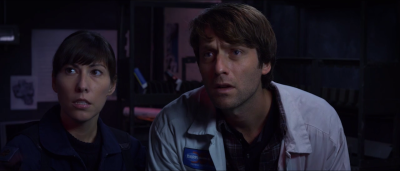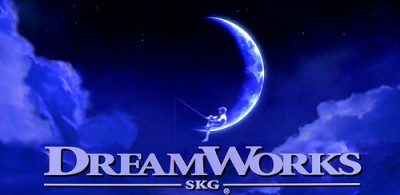From cyborgs, to mutants and dragons, a closer look at animator Andre Leblanc
STORY BY MATTHEW LOWE
It can take years to produce a feature-length animated film like How To Train Your Dragon, says animator Andre Leblanc.
Leblanc graduated from the computer animation program at Sheridan College in 2003.
Leblanc, 37, former visual effects lead at Dreamworks for 10 years, said that a very visually intense scene with large-scale destruction, like the houses exploding in How To Train Your Dragon, could take months.
Leblanc recalled one of those scenes from How To Train Your Dragon.
“The fire was so big it fills the entire screen and it’s chasing the characters. And a shot like that, you’re working on that for two and a half months,” Leblanc said.
“There’s also all the rendering time and the animation. Easier shots might take a few days.”
Even the most graphically complex scenes that take months to build translate to 20 or 30 seconds of screen time.
“As the shots become more and more aggressive, like mountains crumbling, again this isn’t a single shot but a sequence. You could be working on that for six months, or longer. It’s very time-consuming and involves lots of people from different departments,” Leblanc said.
Leblanc was working in visual effects, one of many departments that help put together an animated film. Everyone works together to create an animated film.
“There’s an effects department, a lighting department, a animation department, and a modelling department. If there was a building that needed to be destroyed, they would hand it to effects and the effects guys would make it crumble to the ground,” Leblanc says.
The animation department is responsible for animation all the various characters in a feature film.
In the early stages of a movie, there is only a very small effects team consisting of 3 to 5 people. Leblanc was one of them.
“In the last year of production that number would usually explode to about 40 effects artists working on a movie,” Leblanc says.
“We would have shot effects artists underneath us, anywhere from five to 20, depending on the complexity of the sequence, and we establish the look, say fire burning, destruction and explosions, and the other 15 artists would take that work and implement it into other shots.”
Leblanc left Dreamworks early in 2013 to pursue his dreams of creating his own short films.
“He really wanted to do effects right from the start, even having his final project in the computer animations program had a lot of effects,” said Mark Simon, coordinator of the computer animations program at Sheridan.
Leblanc also worked on two short films at Sheridan, The Storm and Parallel, in the computer animation program.

Leblanc’s film The Storm pits two survivors, Jane and Daniel, against mutant, sensory-deprived humans who know nothing but hunger
“There were six of us working on it (Parallel) as visual effects artists. I was the director. At the time it was really, really ambitious, about cyborgs being built on an assembly line and one of them comes to life,” Leblanc said.
Working on Parallel while he was still in college gave Leblanc a taste of how to work together in teams and what the industry was really like.
“You weren’t working on your own. Suddenly there were six of us working on this one project and that’s very much what it’s like in the industry. You’re never working alone on anything,” Leblanc said. Work is shared and requires everyone to work efficiently to meet deadlines, he said.
Leblanc has two valuable pieces of advice for aspiring animators: be persistent and learn from your mistakes.
“You learn more from your mistakes than you do from your successes. At least from your mistakes, if you’re aware of them, those are the things that you try to improve on for the next time around. On top of that, having the persistence to go back, start again and do it better,” Leblanc said.
“If you learn from those two things, it will take a while, but it will certainly help you in the long run.”
The Storm, directed by Leblanc, can be viewed here and a larger version of the GIF above can be viewed here.






